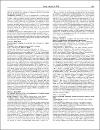Calmodulin Mutations Associated with Congenital Cardiac Disease Display Novel Biophysical and Biochemical Characteristics

Date
2018-02Author
Nomikos, MichailThanassoulas, Angelos
L. Calver, Brian
Beck, Konrad
Vassilakopoulou, Vyronia
Buntwal, Luke
Konotgianni, Iris
Smith, Adrian
Safieh-Garabedian, Bared
Livaniou, Evangelia
Steen Toft, Egon
Nounesis, George
...show more authors ...show less authors
Metadata
Show full item recordAbstract
Calmodulin (CaM) is a cytoplasmic multifunctional calcium (Ca2+)-binding messenger that interacts with the cardiac ryanodine receptor (RyR2), a large transmembrane Ca2+ channel that mediates Ca2+ release from the sarcoplasmic reticulum (SR) to activate cardiac muscle contraction. Recent genetic studies have reported CaM missense mutations in patients with a history of severe cardiac arrhythmogenic disorders. Herein, we have investigated the effect of four novel missense CaM mutations, identified in two patients presenting with long QT syndrome (LQTS) (N98I, D134H), and two patients with clinical features of both LQTS and catecholaminergic polymorphic ventricular tachycardia (CPVT), (D132E and Q136P), relative to the biophysical and biochemical properties of wild type CaM (CaMWT). We used CD spectroscopy to examine the thermal stability of CaMWT and mutant proteins. In the absence of Ca2+, thermodynamic values for all proteins were similar. In contrast, in the presence of Ca2+, there was a significant decrease in the stability of the five proteins following the order CaMWT> CaMN98I > CaMD132E > CaMQ136P > CaMD134H. Further Ca2+-binding studies revealed that all CaM mutations significantly reduce the Ca2+-binding affinity of CaMWT. CaMQ136P protein exhibited a ∼7-fold reduced Ca2+-binding affinity compared to CaMWT, while CaMD132E had a ∼14-fold reduction. Furthermore, biochemical analysis revealed that all four CaM mutants displayed dramatically reduced RyR2 interaction and defective modulation of [3H]ryanodine binding to RyR2, regardless of LQTS or CPVT association. Our findings confirm our previous observations suggesting that the clinical presentation of LQTS or CPVT associated with these four CaM mutations may involve both altered intrinsic Ca2+-binding as well as dysregulation of RyR2-mediated Ca2+ release via aberrant interaction of CaM with RyR2.
Collections
- Medicine Research [1913 items ]


